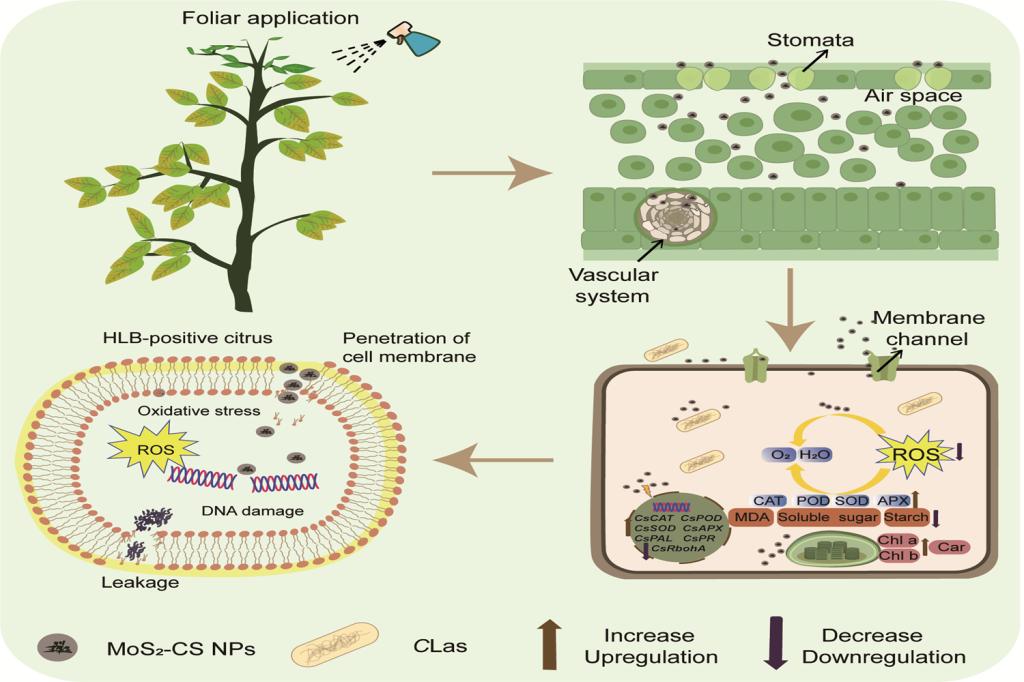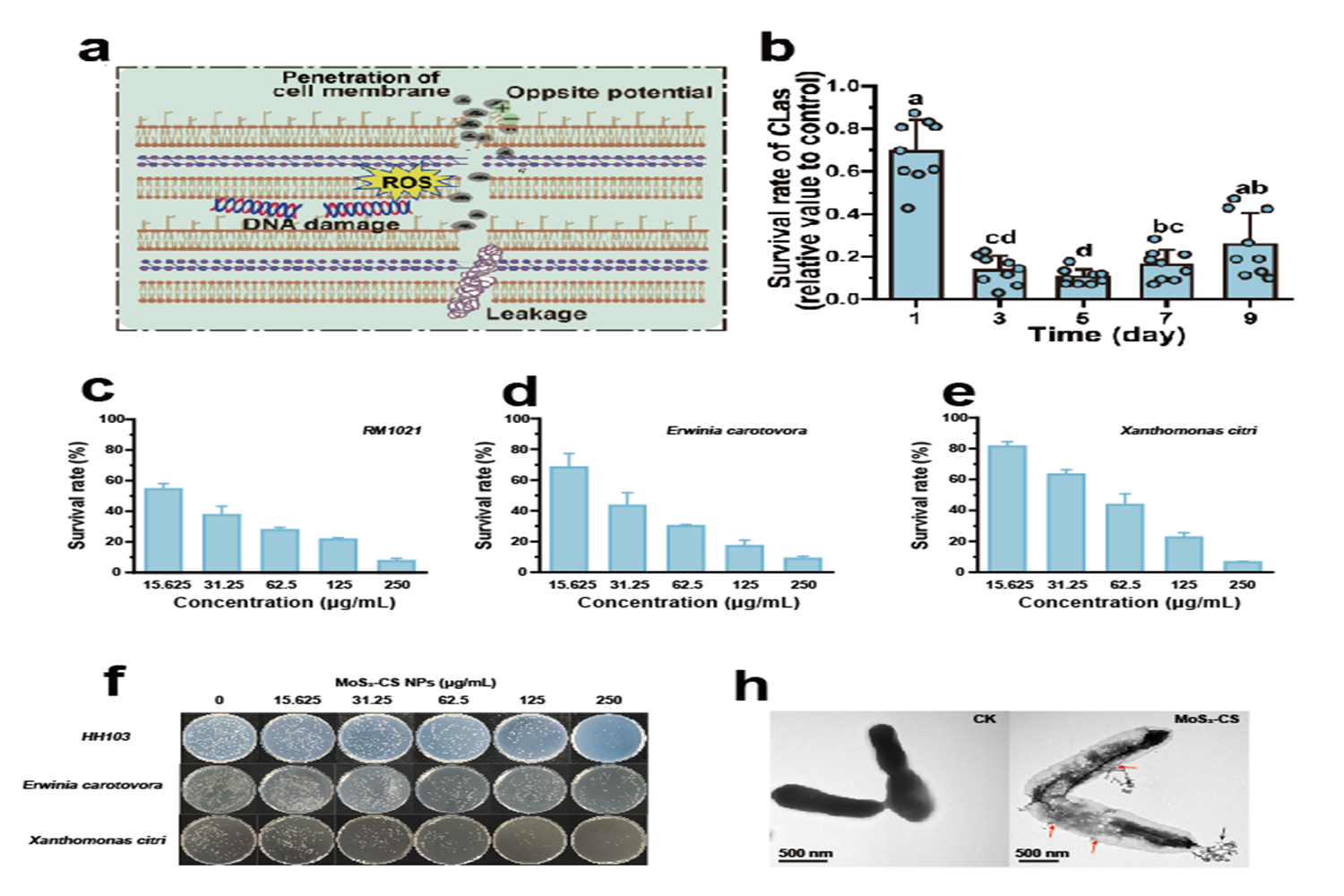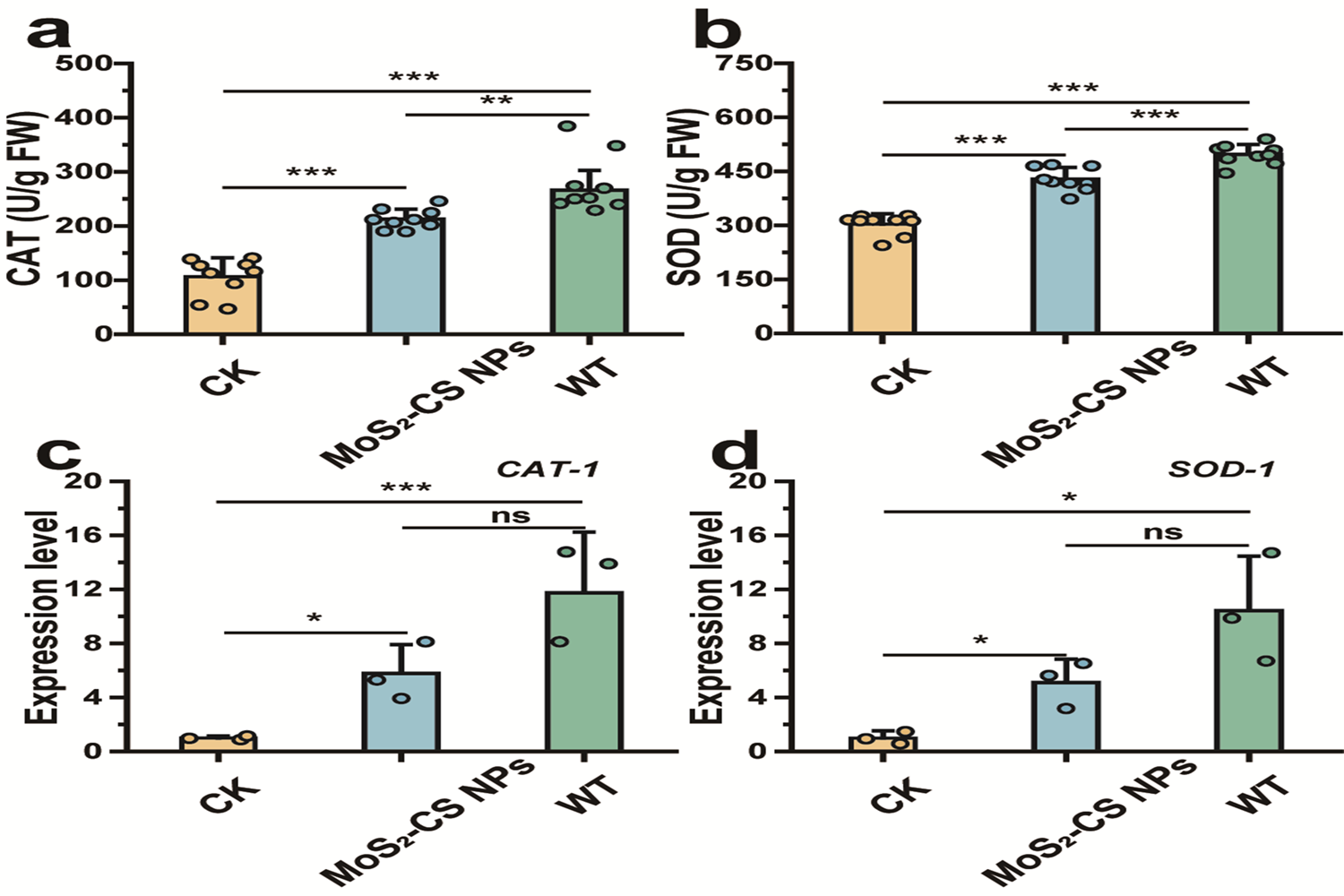南湖新闻网讯(通讯员 邓桂云)近日,我校农业微生物资源发掘与利用全国重点实验室、纳米化学生物学团队韩鹤友教授课题组在International Journal of Biological Macromolecules发表题为“A Two-in-One Molybdenum Disulfide-Chitosan Nanoparticles System for Activating Plant Defense Mechanisms and Reactive Oxygen Species to Treat Citrus Huanglongbing”的研究论文。该论文详细研究了柑橘黄龙病的纳米防治新技术。
该研究制备了一种壳聚糖修饰的纳米二硫化钼抗菌体系,主要研究内容及结果如下:(1)图1所示,MoS2-CS NPs通过引起细菌表面膜皱缩和物理刺穿,破坏了细菌的细胞结构;上调了抗氧化酶活性,降低ROS给植物带来的损伤;显著增强了MoS2的抑菌活性。

图一 MoS2-CS NPs作用机理

图二 MoS2-CS NPs的抗菌活性
a. MoS2-CS NPs对细菌膜的破坏;b. 黄龙病病菌;c. RM1021;d. 软腐菌;e. 柑橘溃疡菌;f. RM1021、软腐菌、柑橘溃疡菌抗菌涂布试验;h.对柑橘溃疡菌的膜作用电镜图.
(2)图2的体外模拟抗菌试验结果显示,对黄龙病菌同属的根瘤菌RM1021、柑橘溃疡菌、软腐菌的抑制效果均达到90%(图2. c-d、h所示);在活体植株上对黄龙病菌抑制效果达90%(图2. b)。
(3)图3的实验结果表明,过氧化氢酶(CAT)、超氧化物歧化酶(SOD)分别上调114.33%、141.12%(图3. a-b)及相关基因分别上调5.78±1.94倍和4.53±1.87倍,减轻了氧化应激对植物的损害。

图3 MoS2-CS NPs的抗氧化酶活性调节
a.CAT酶活;b. SOD酶活;d. CAT基因上调;d. SOD基因上调
综上,本研究为柑橘黄龙病的防治提供了一种纳米技术新策略,
华中农业大学博士生邓桂云、李烁钧和硕士生陆飞帆为论文的共同第一作者,韩鹤友教授和丁芳教授为论文共同通讯作者。该研究得到国家重点研发计划项目(2021YFD1400803)的资助。
审核人:韩鹤友 丁芳
论文链接:https://doi.org/10.1016/j.ijbiomac.2024.135528
英文摘要:
Citrus Huanglongbing (HLB) poses an enormous challenge to Citrus cultivation worldwide, necessitating groundbreaking interventions beyond conventional pharmaceutical methods. In this study, we propose molybdenum disulfide-chitosan nanoparticles (MoS2-CS NPs) through electrostatic adsorption, preserving the plant-beneficial properties of molybdenum disulfide (MoS2), while enhancing its antibacterial effectiveness through chitosan modification. MoS2-CS NPs exhibited significant antibacterial efficacy against RM1021, and the closest relatives to Candidatus Liberibacter asiaticus (CLas), Erwinia carotovora, and Xanthomonas citri achieved survival rates of 7.40%±1.74%, 8.94%±1.40%, and 6.41%±0.56%, respectively. In vivo results showed, CLas survival rate of 10.42%±3.51%. Furthermore, treatment with MoS2-CS NPs resulted in an increase in chlorophyll and carotenoid content. Concomitantly, a significant reduction in malondialdehyde (MDA), soluble sugar, hydrogen peroxide (H2O2), and starch contents was also observed. Mechanistically, MoS2-CS NPs enhanced the activity of antioxidant-related enzymes by upregulating the expression of antioxidant genes, thereby galvanizing the antioxidant system to alleviate oxidative stress. Collectively, this dual functionality—combining direct antibacterial action with the activation of plant defense mechanisms—marks a promising strategy for managing Citrus Huanglongbing and suggests potential agricultural applications for MoS2-based antibacterial treatments.